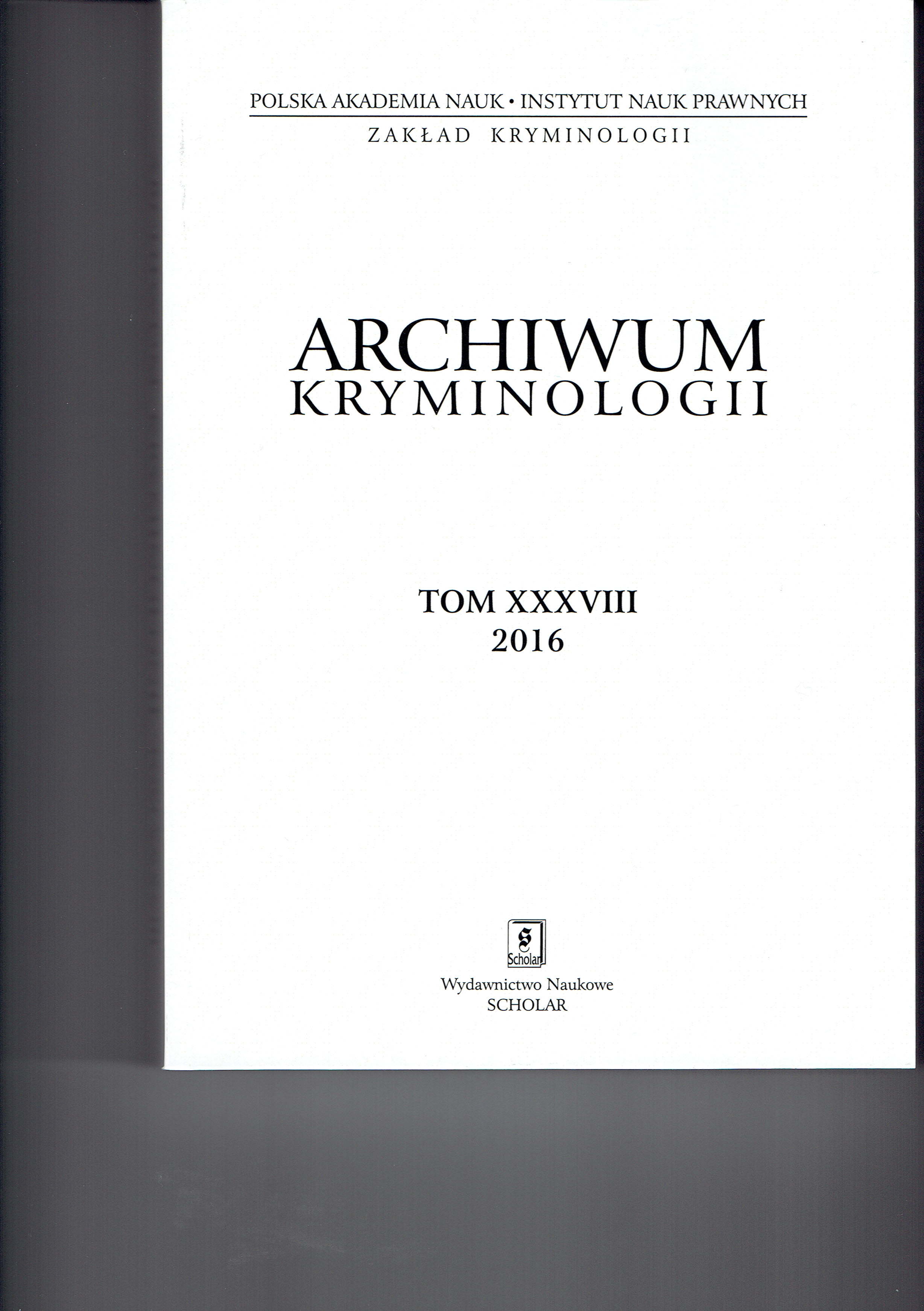Risk Assessment and the Safe Return and Reintegration of Trafficked Persons
Risk Assessment and the Safe Return and Reintegration of Trafficked Persons
Author(s): Elisa LudwigSubject(s): Law, Constitution, Jurisprudence, Criminal Law
Published by: Instytut Nauk Prawnych PAN
Keywords: risk assessment;safe return;reintegration;trafficked persons; criminology;
Summary/Abstract: Human trafficking is a complex crime and a capital perpetration against human rights and in particular women’s rights. Moreover, it is a threat to inter-/national security and freedom. People affected by trafficking often want to or even have to return to their home countries – and they are entitled to a safe return. The expertise on Risk assessment and the Safe Return and Reintegration of trafficked persons from the perspective of Polish institutions aims to enable public officers of Poland to prevent retrafficking and/or other harms and violations of human rights, in case that trafficked persons decide to return to their countries of origin or to resettle to a third country. For that matter, the paper starts with describing the identification process as the most important step in order to enable any further assistance concerning support-, protection-, safety- and possible legal measures; including the preferably voluntary return of a survivor. Having a clear definition of human trafficking – orientated on the Polish Penal Code – is the basic requirement in order to properly identify (presumed) victims of trafficking. As experience and empiricism show, failure in the identification procedure is the most common reason for repeated trafficking in human beings or other violations of human rights. Therefore, the indicators presented in this chapter serve as an identification-checklist for the officers concerned. The experts responsible of the formal identification then have to act upon any suspicion that may arise. As soon as this is given, a reflection period has to be granted to any presumed victim. The provision of this reflection period represents an indispensable principle in the adequate assistance of trafficked persons and is highlighted at the end of the chapter on identification. In the following, the paper continues with the framework of a safe return, where the measures necessary to successfully carrying out a proper risk analysis and designing security scenarios are introduced. In order to prioritize the trafficked person’s rights, safety and dignity, coordinated action in conducting a safe return between state actors and NGOs, embassies and consulates have to be emphasized. After putting a spotlight on the importance of a human rights based approach in the assistance of trafficked persons, the expertise goes more specifically into the required steps to conduct a systematic risk assessment. Here, the history of the trafficked person, research on additional sources in order to compile all possible facts and the concerted shaping of security scenarios between all involved actors are pointed out. A safe return always has to include a successful reintegration in the country of origin respectively in a third country, where the trafficked persons might need to be resettled. For this reason, the situation for survivors after the return is examined. As part of the monitoring procedure, actors have to assess the success of a safe return including the reintegration experiences of a trafficked person. The respective indicators to ensure a successful reintegration are enlisted at the end of that chapter. Finally, the expertise discusses the specific role of Polish public authorities and deals with their prospects and challenges, before it completes with examples from the practical experiences of Anti-Trafficking NGOs. Exigencies like the cooperation with specialized NGOs as early as possible during the identification phase, the provision of legal residences, the needed interventions concerning free mobility of trafficked persons and the requirements to support departure, migration and entry processes are examined more in-depth in the penultimate chapter. Eventually, the expertise describes specific challenges Polish public authorities have to face and closes with the chapter to a Best Practice and a Worst Case Scenario from Anti-Trafficking NGOs.
Journal: Archiwum Kryminologii
- Issue Year: 2016
- Issue No: XXXVIII
- Page Range: 141-160
- Page Count: 20
- Language: English

